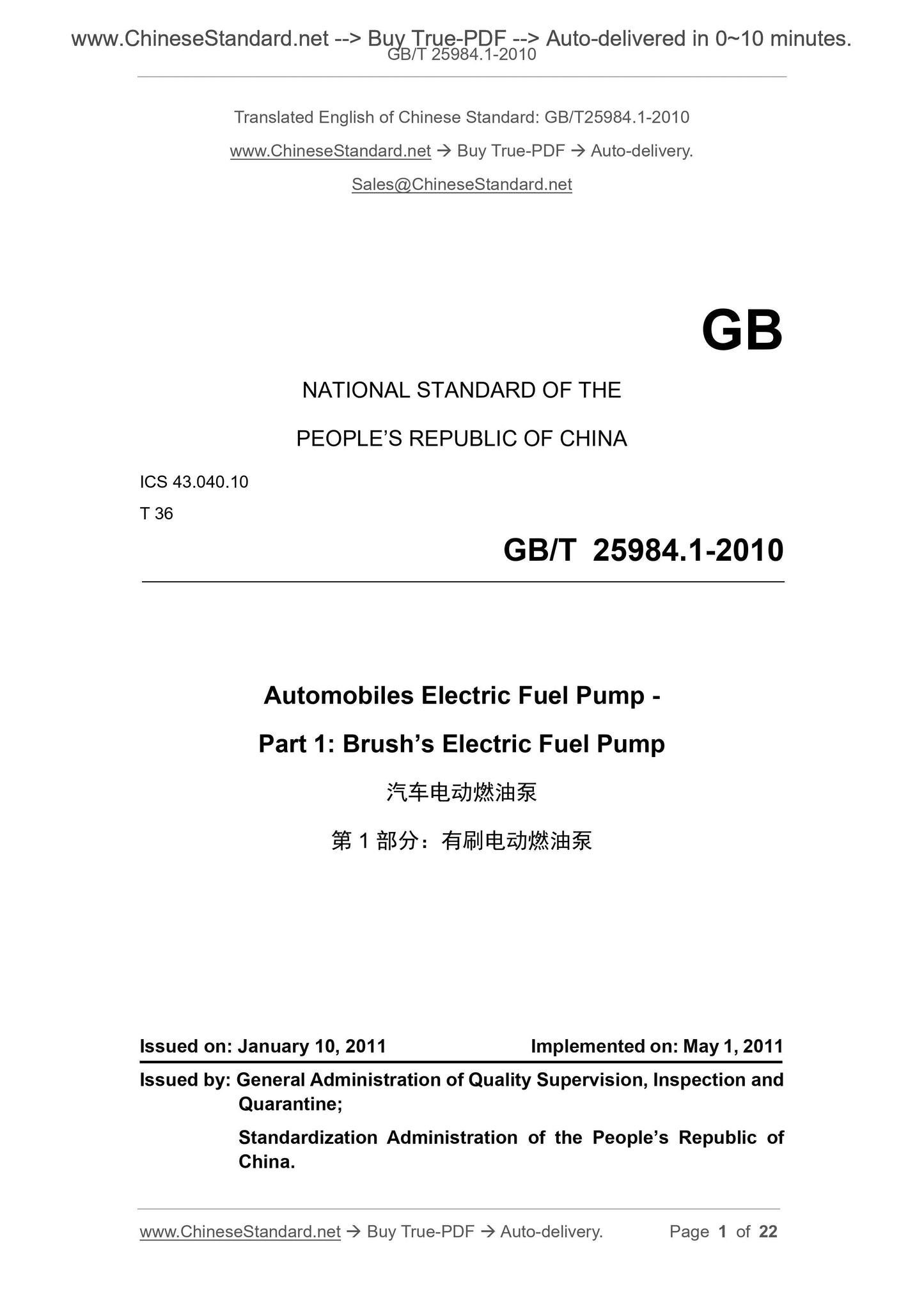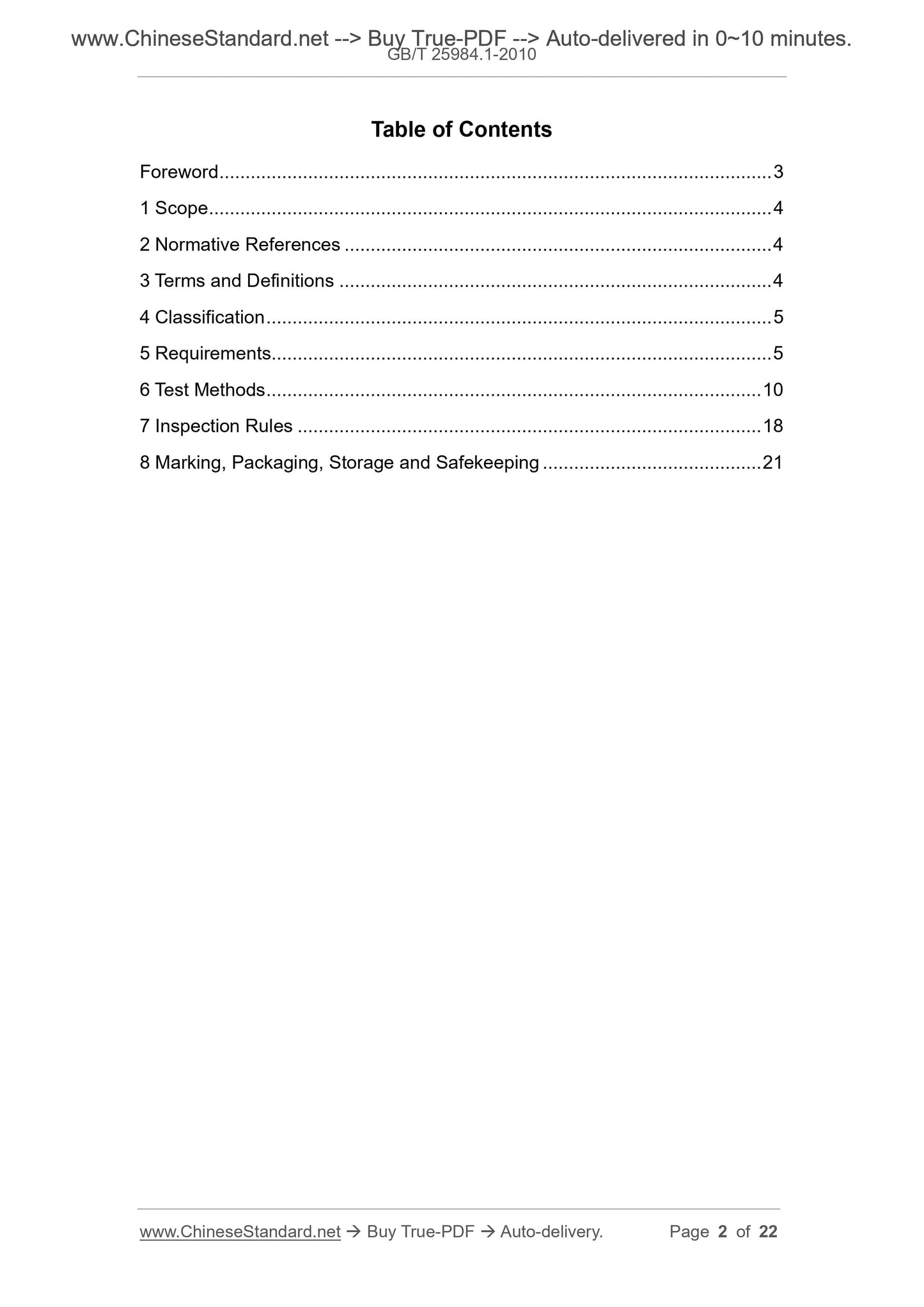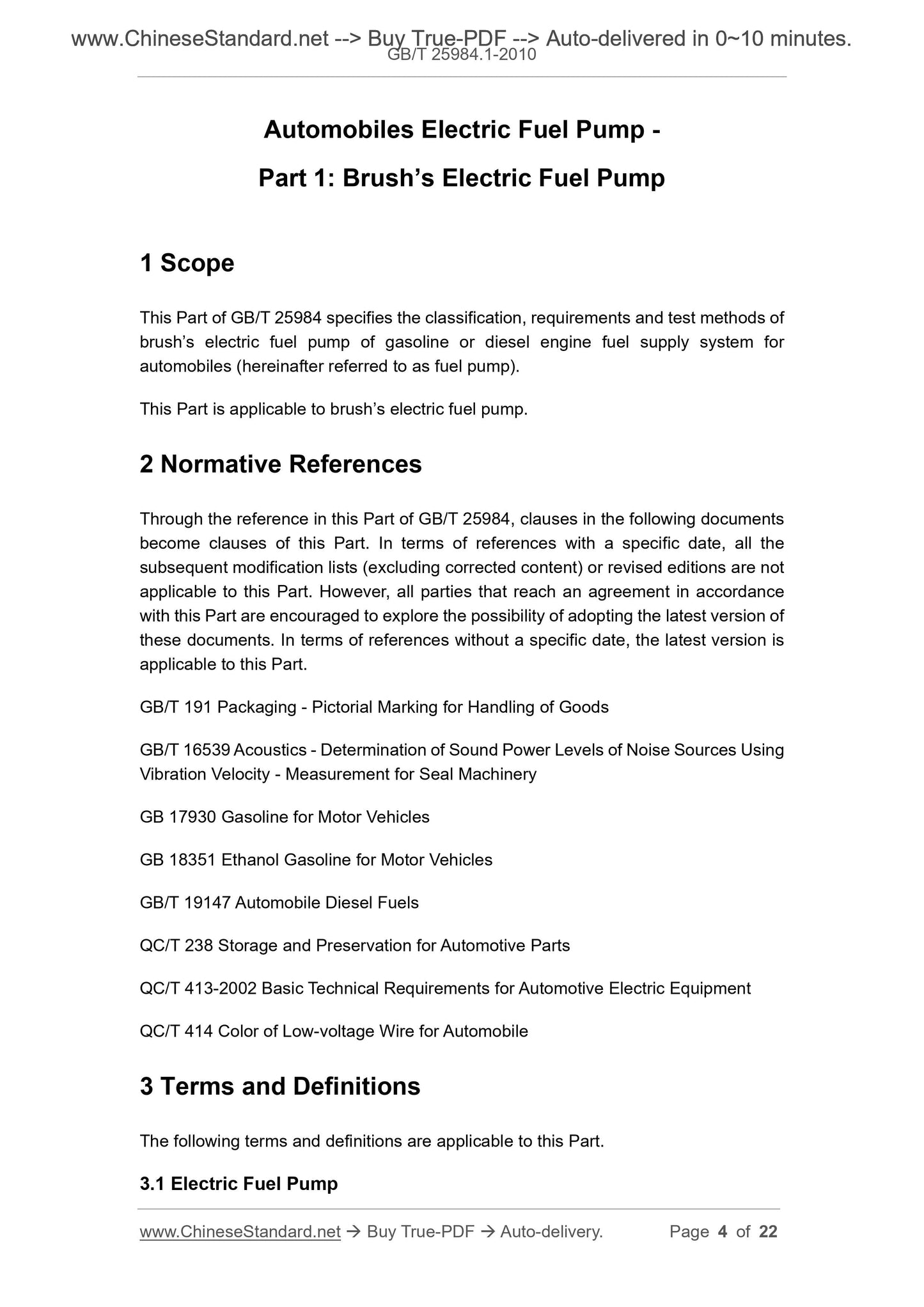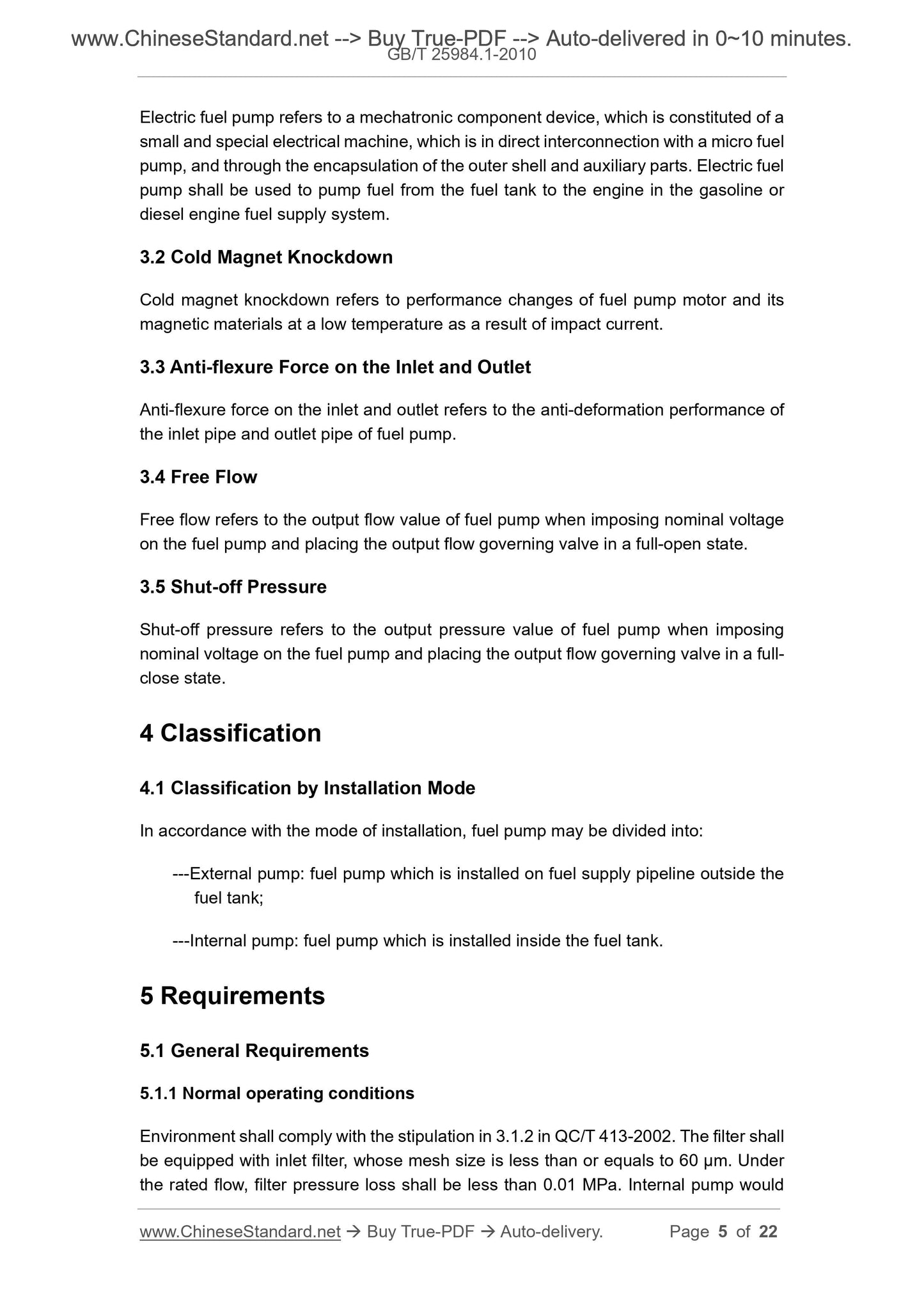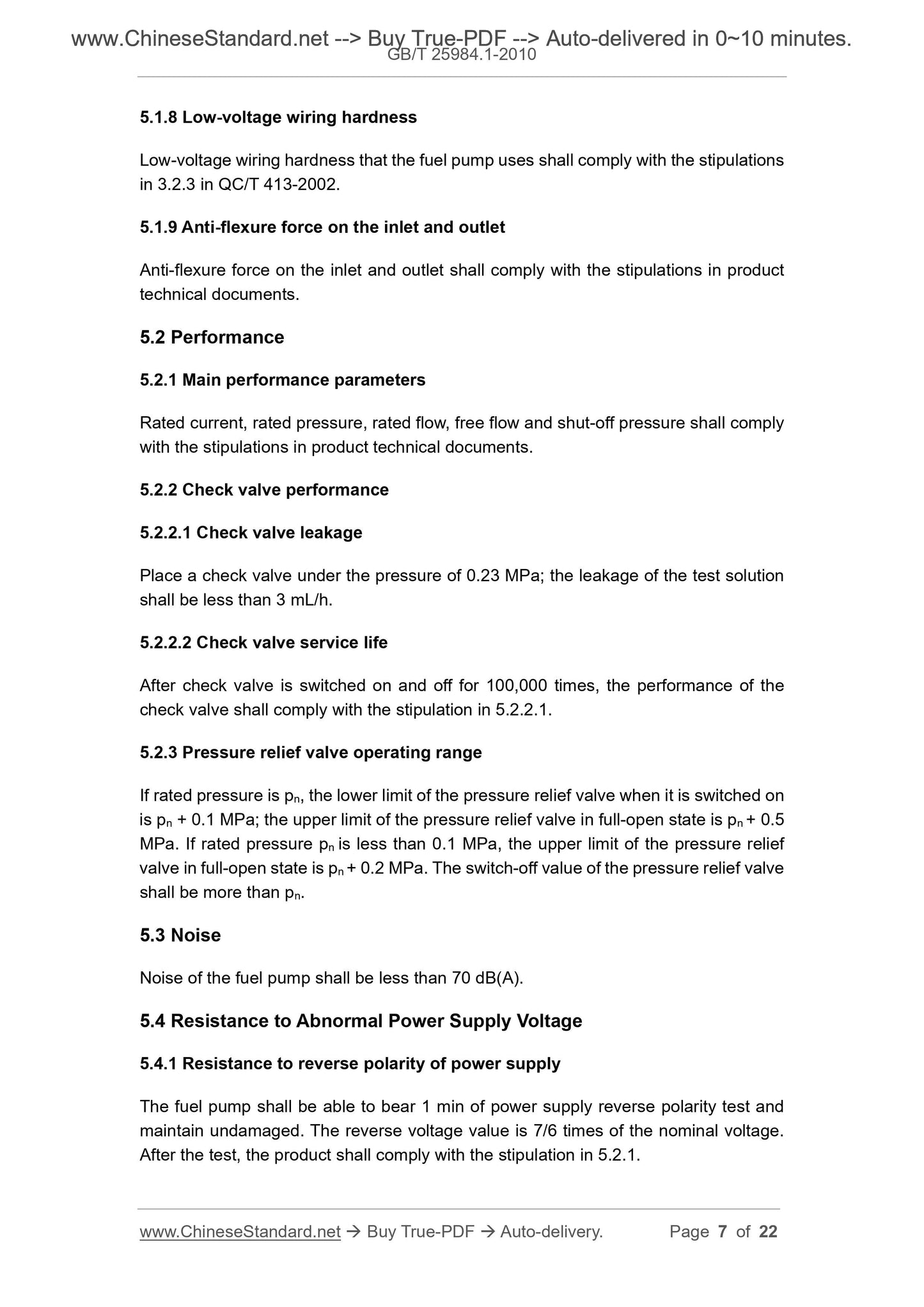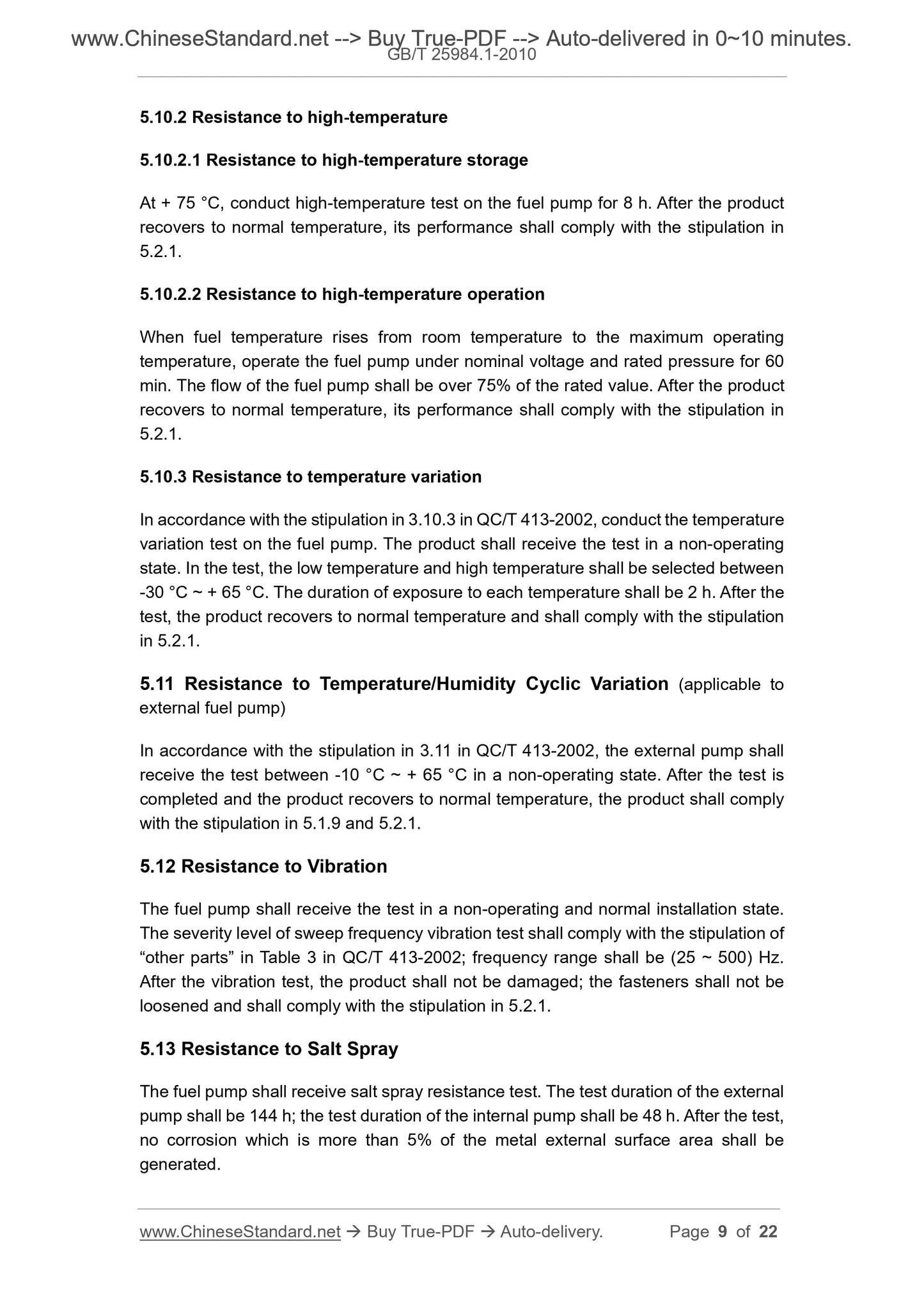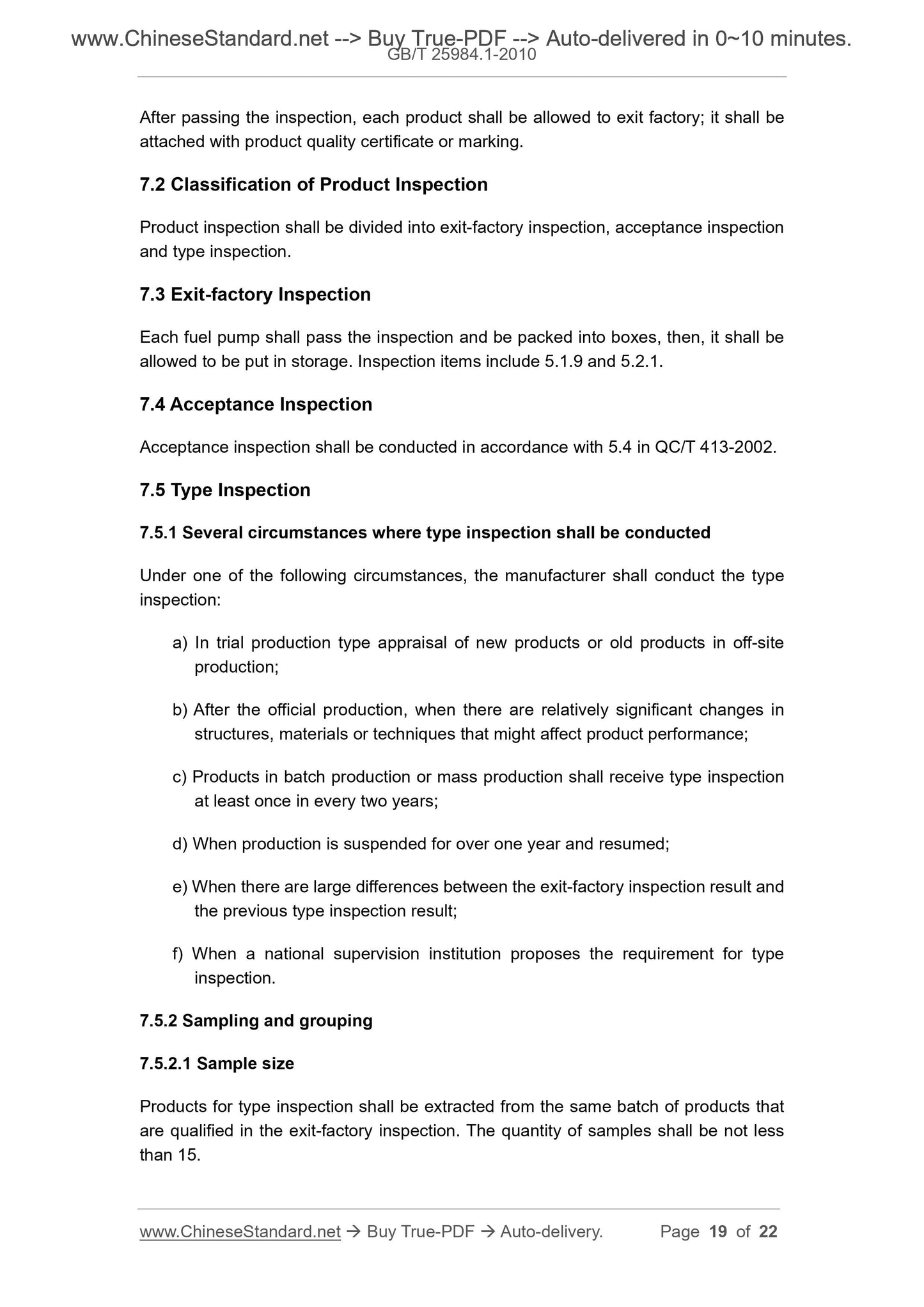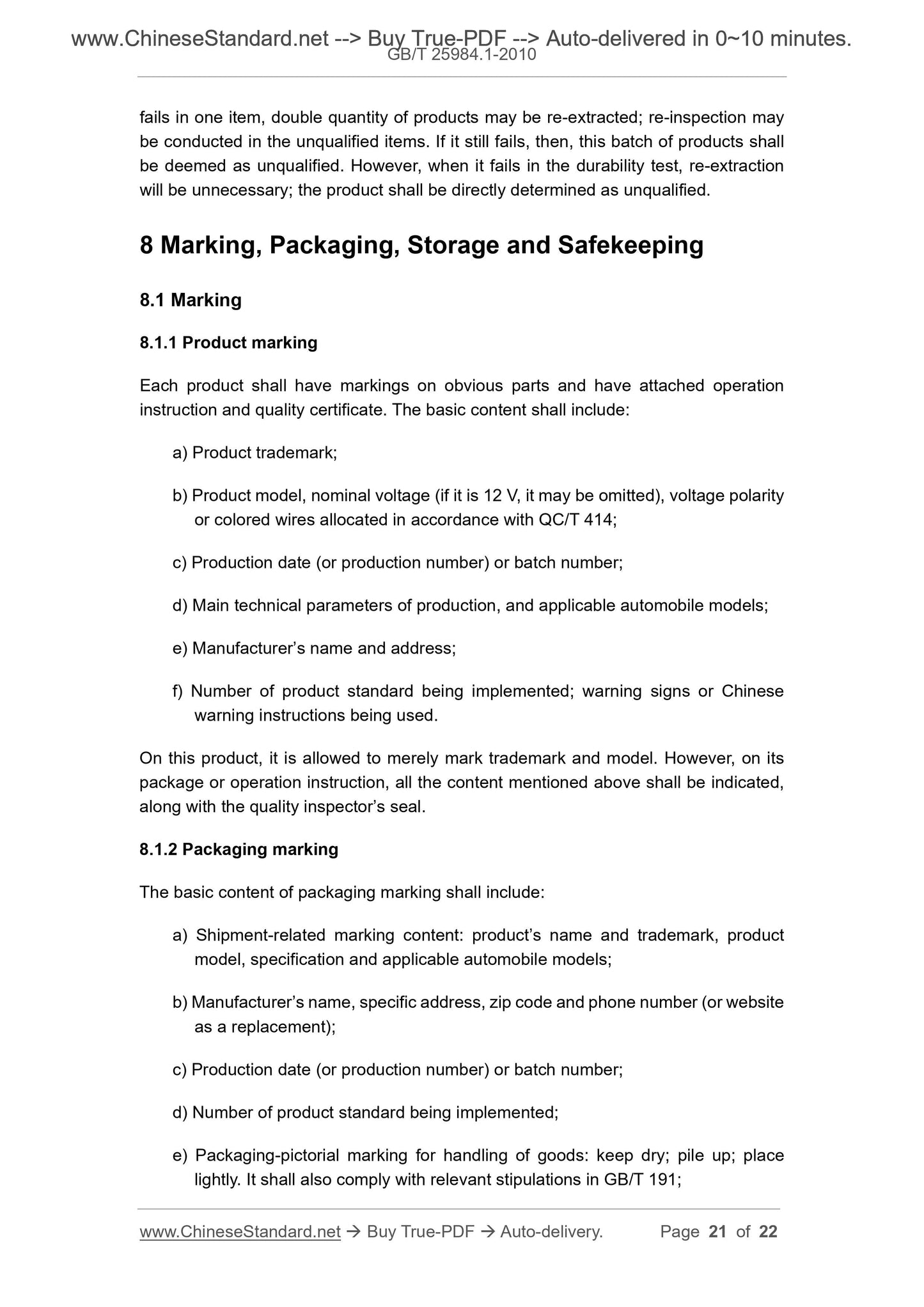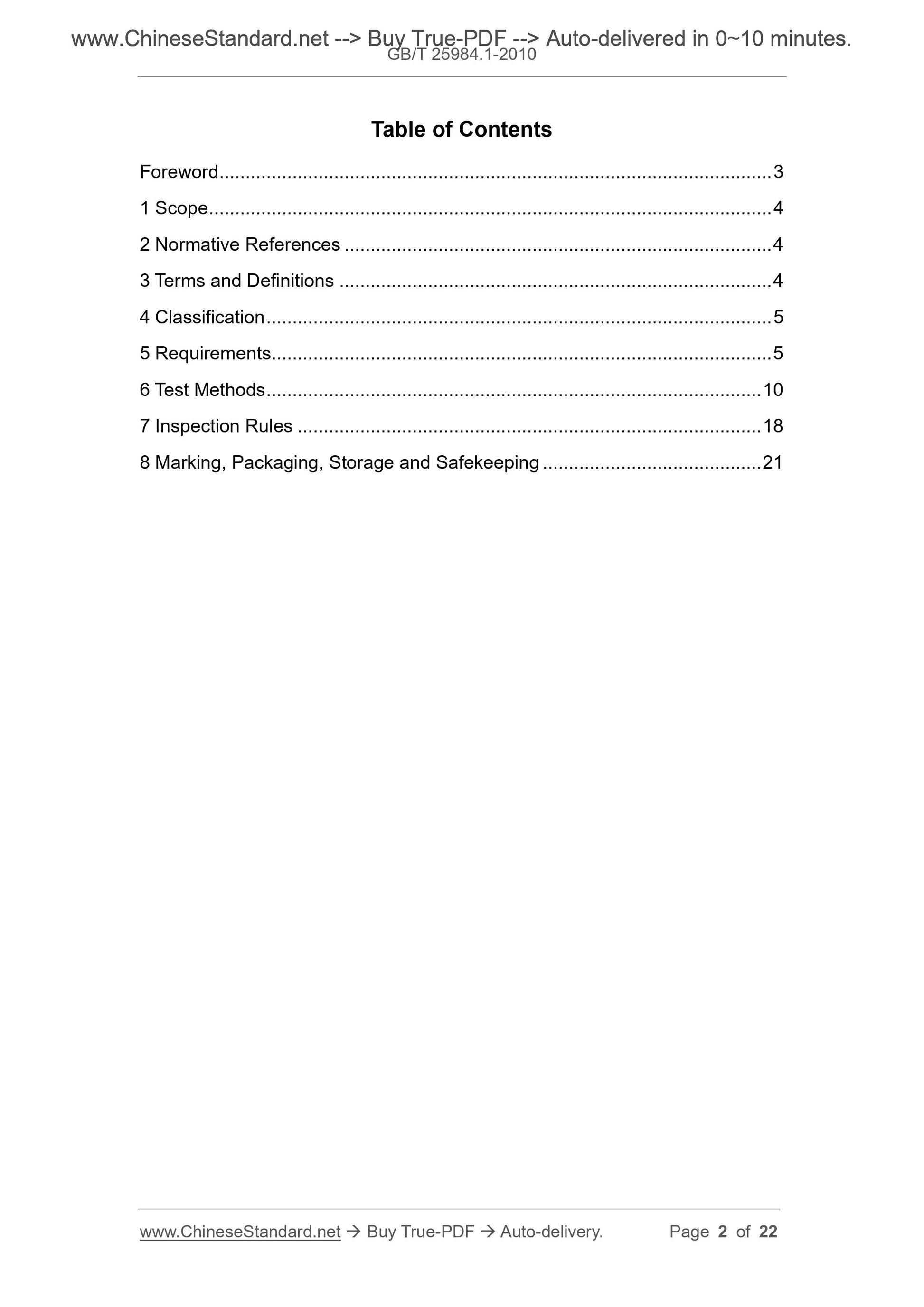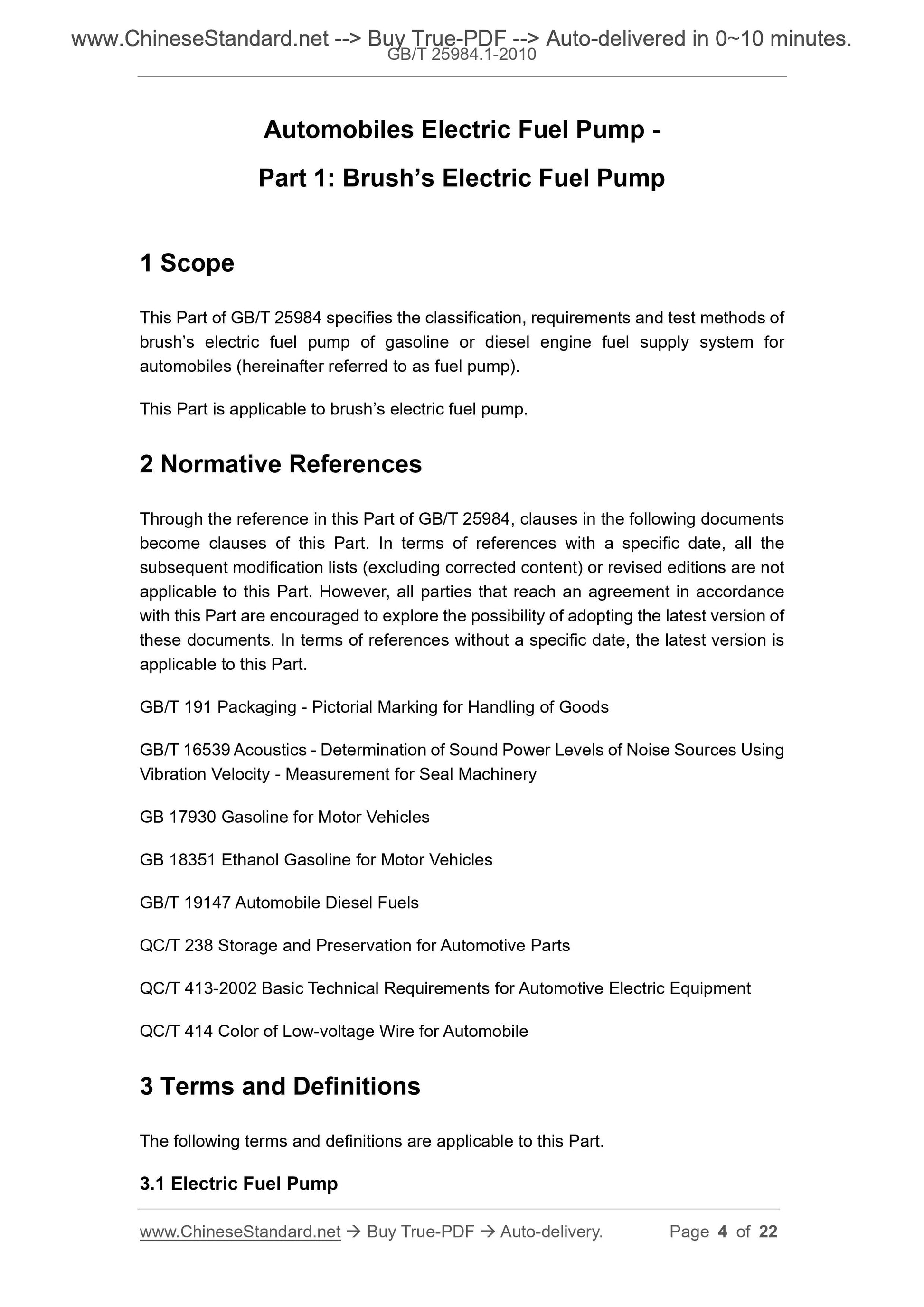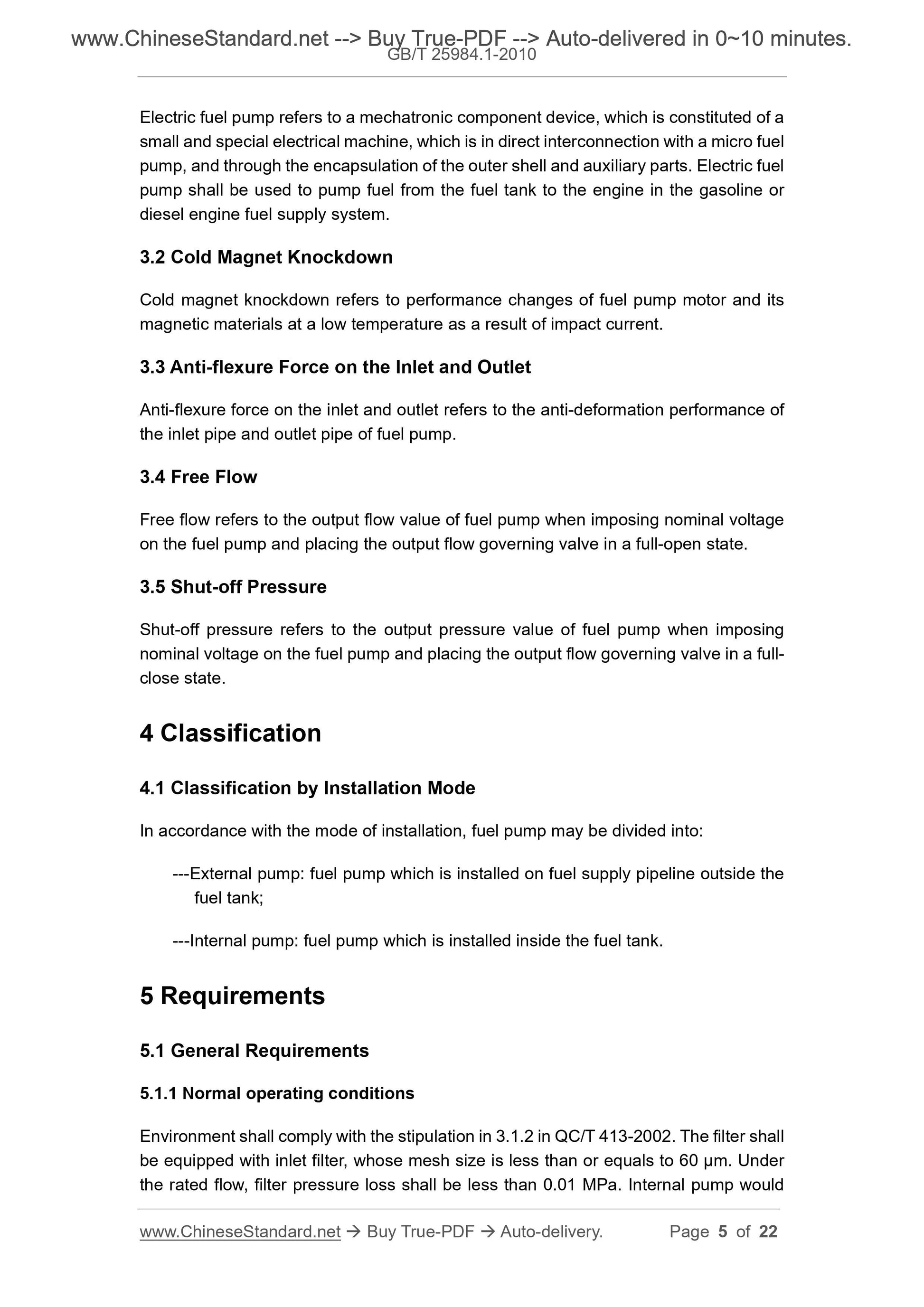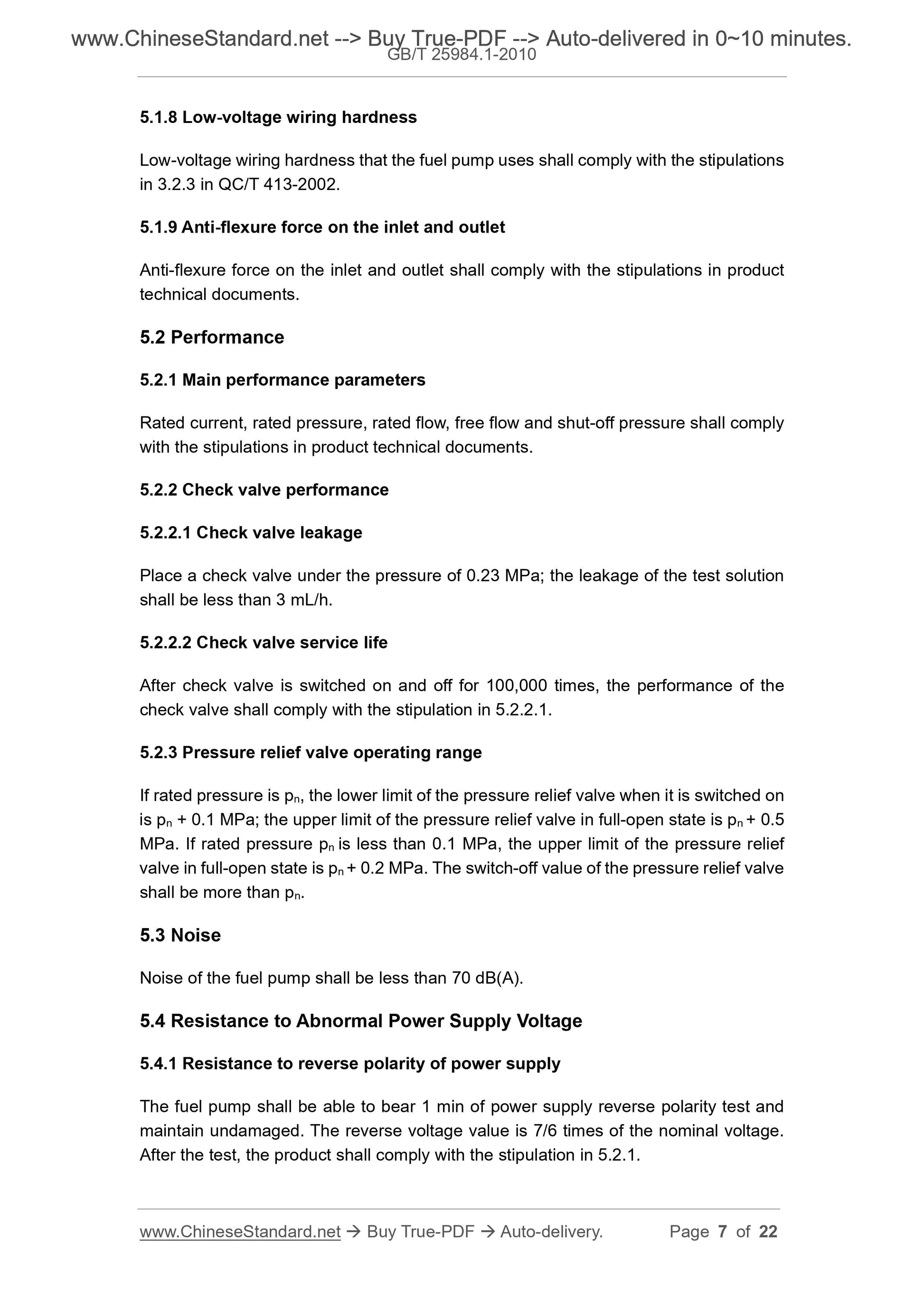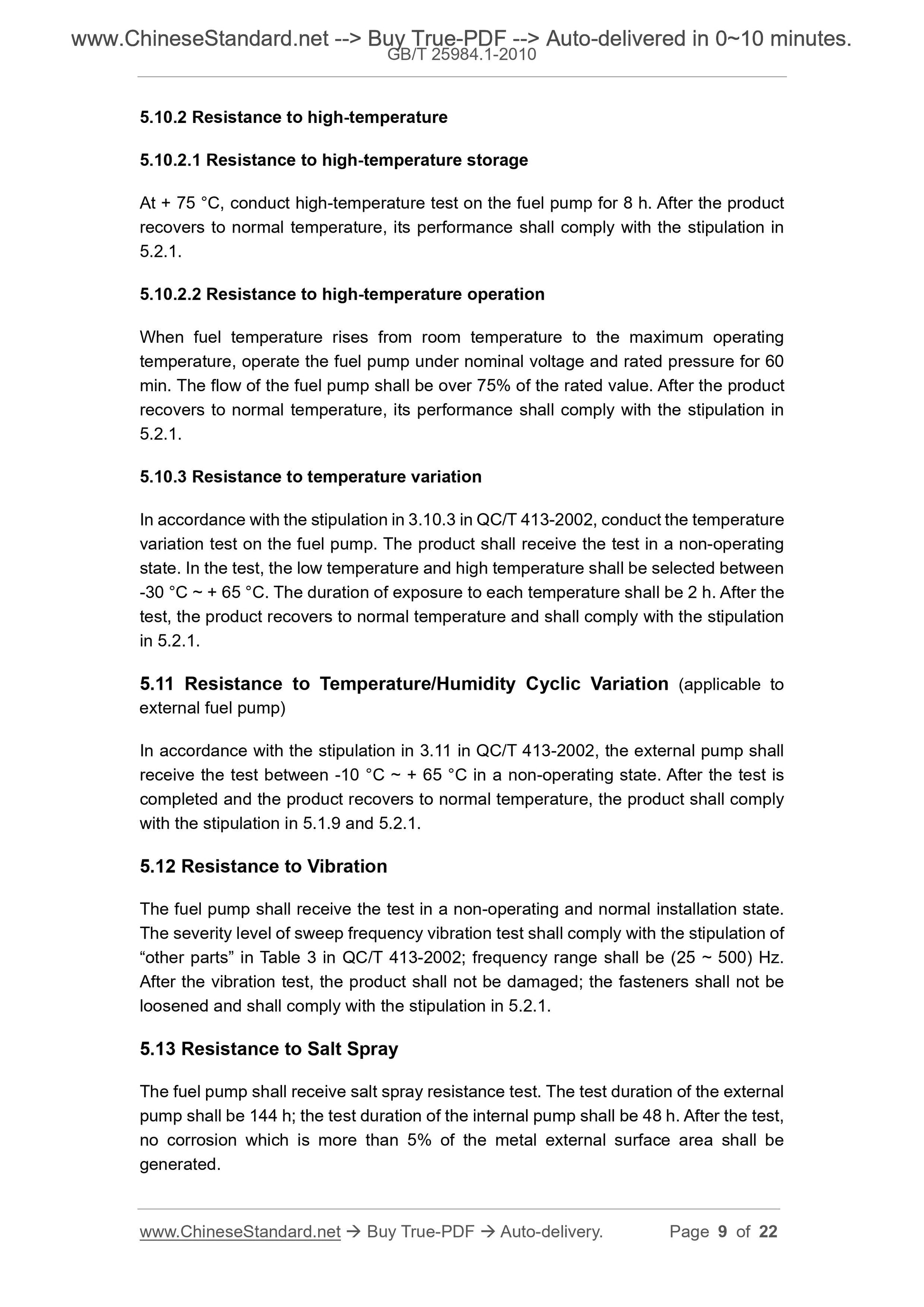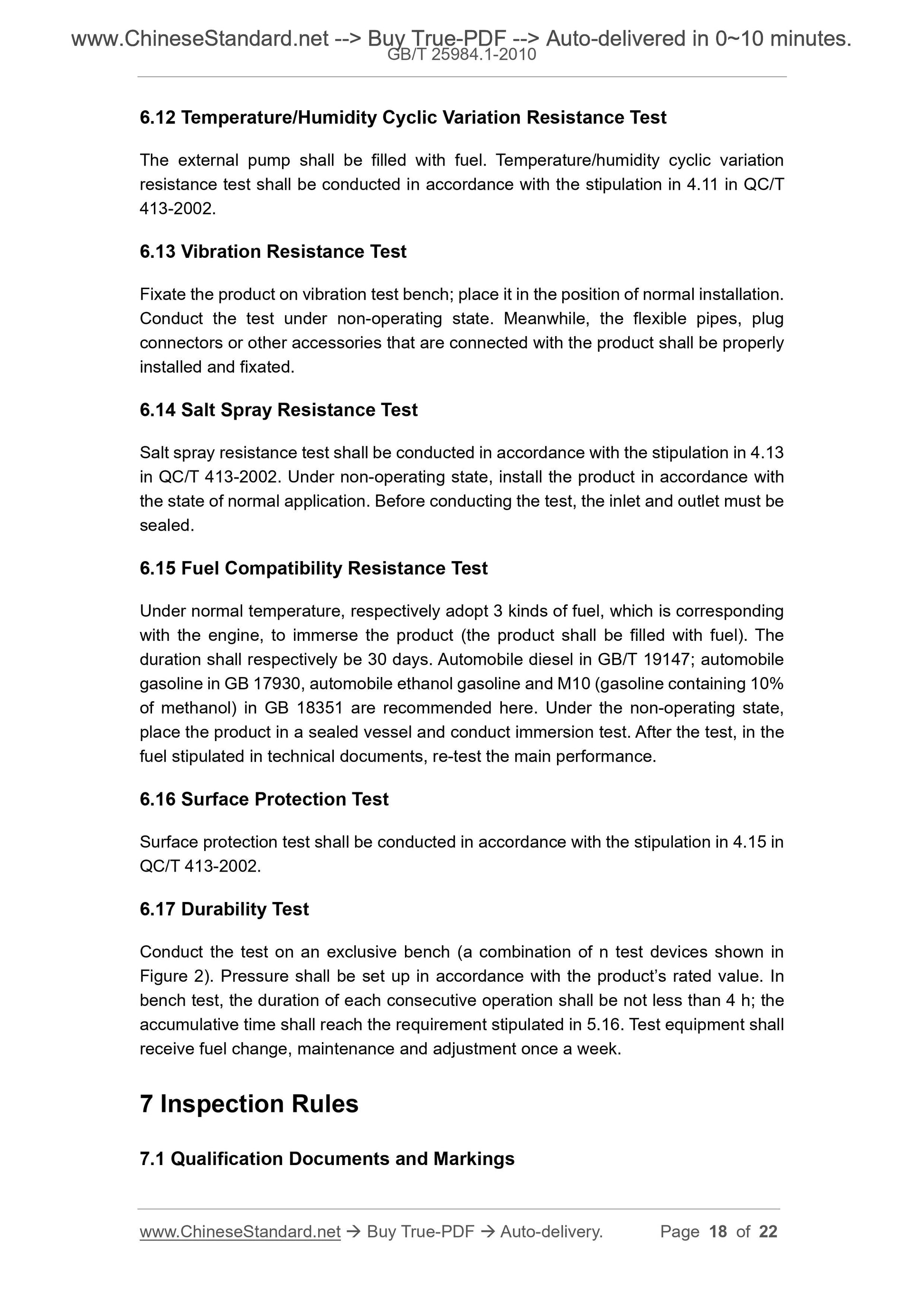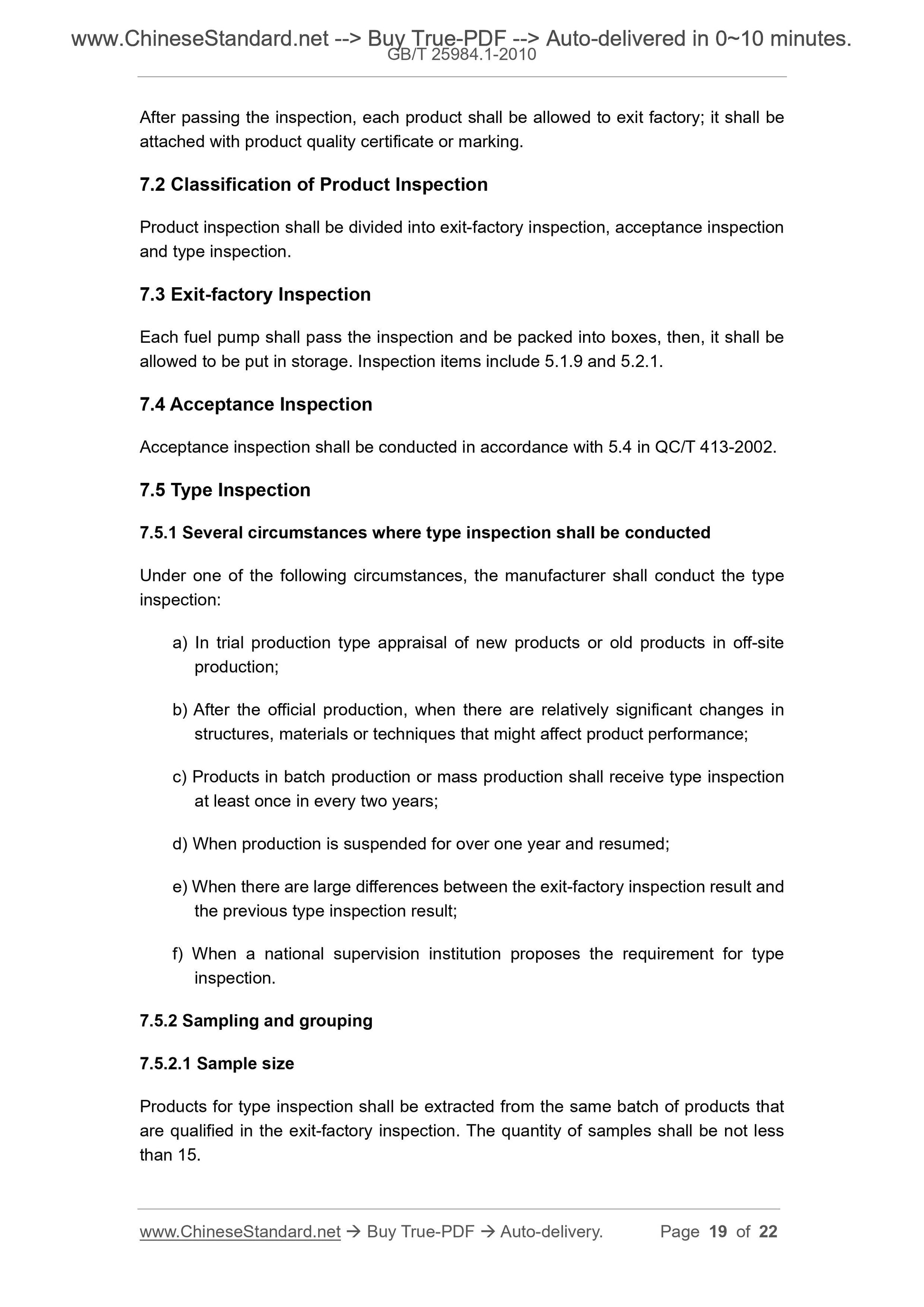1
/
of
9
www.ChineseStandard.us -- Field Test Asia Pte. Ltd.
GB/T 25984.1-2010 English PDF (GB/T25984.1-2010)
GB/T 25984.1-2010 English PDF (GB/T25984.1-2010)
Regular price
$145.00
Regular price
Sale price
$145.00
Unit price
/
per
Shipping calculated at checkout.
Couldn't load pickup availability
GB/T 25984.1-2010: Automobiles Electric Fuel Pump - Part 1: Brush Electric Fuel Pump
Delivery: 9 seconds. Download (and Email) true-PDF + Invoice.Get Quotation: Click GB/T 25984.1-2010 (Self-service in 1-minute)
Newer / historical versions: GB/T 25984.1-2010
Preview True-PDF
Scope
This Part of GB/T 25984 specifies the classification, requirements and test methods ofbrush’s electric fuel pump of gasoline or diesel engine fuel supply system for
automobiles (hereinafter referred to as fuel pump).
This Part is applicable to brush’s electric fuel pump.
Basic Data
| Standard ID | GB/T 25984.1-2010 (GB/T25984.1-2010) |
| Description (Translated English) | Automobiles Electric Fuel Pump - Part 1: Brush Electric Fuel Pump |
| Sector / Industry | National Standard (Recommended) |
| Classification of Chinese Standard | T36 |
| Classification of International Standard | 43.040.10 |
| Word Count Estimation | 13,183 |
| Date of Issue | 1/10/2011 |
| Date of Implementation | 5/1/2011 |
| Quoted Standard | GB/T 191; GB/T 16539; GB 17930; GB 18351; GB/T 19147; QC/T 238; QC/T 413-2002; QC/T 414 |
| Regulation (derived from) | Announcement of Newly Approved National Standards 2011 No. (No. 166 overall) 1 |
| Issuing agency(ies) | General Administration of Quality Supervision, Inspection and Quarantine of the People's Republic of China, Standardization Administration of the People's Republic of China |
| Summary | This Standard specifies the car with petrol or diesel engine fuel supply system of a brush electric fuel pump (hereinafter referred to as: fuel pump) classification, requirements, test methods. This Standard is applicable to brush electric fuel pump. |
Share
